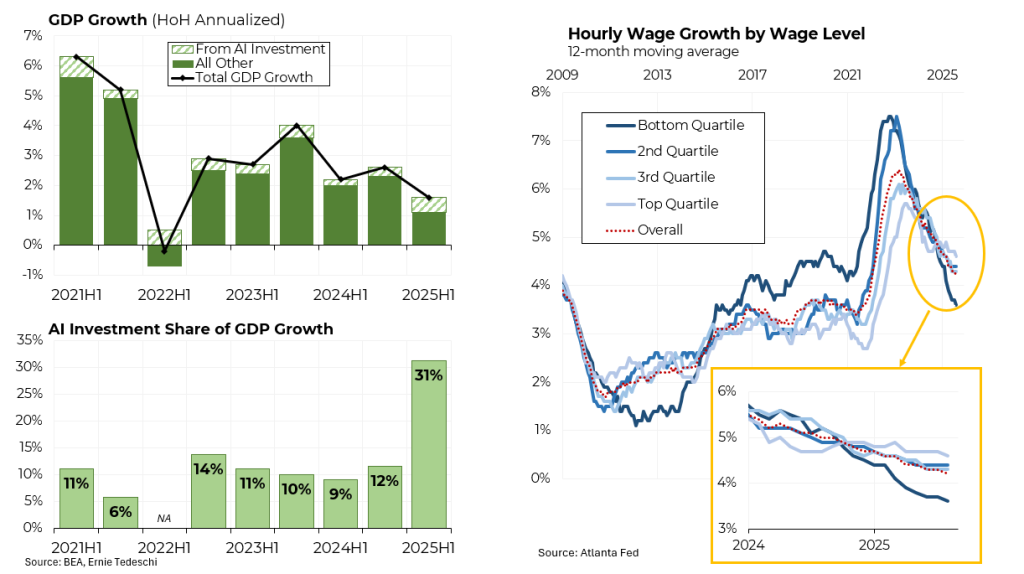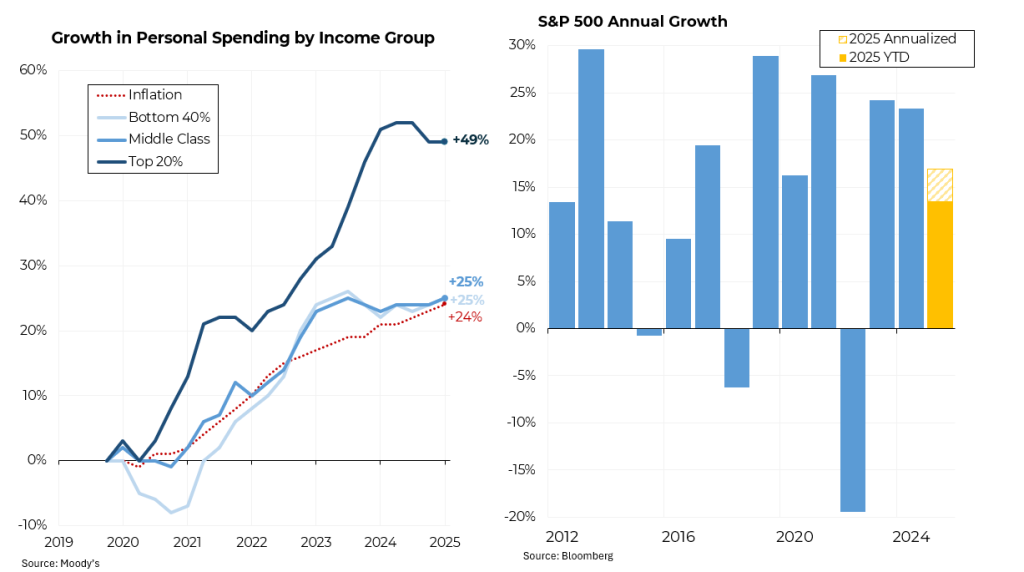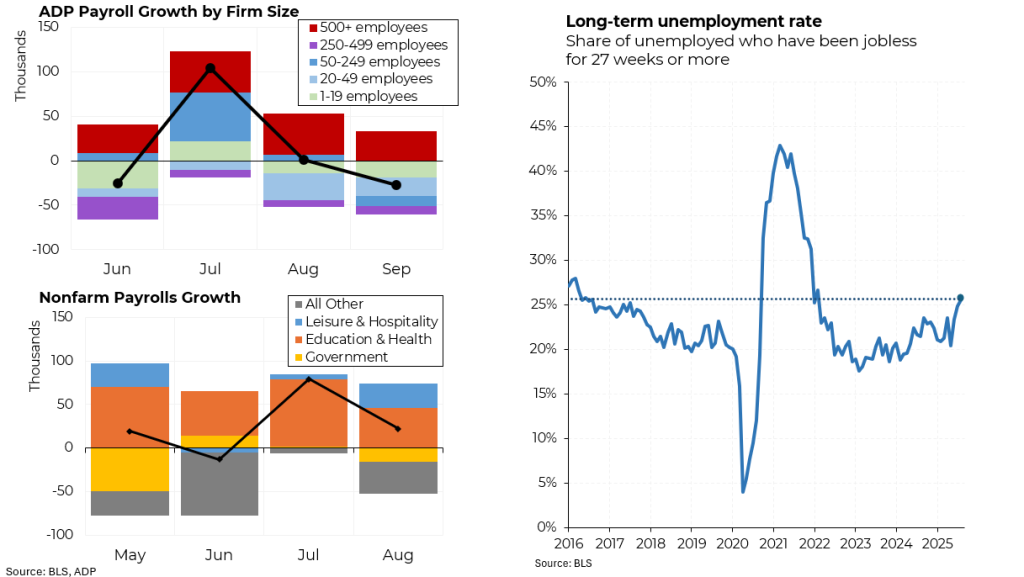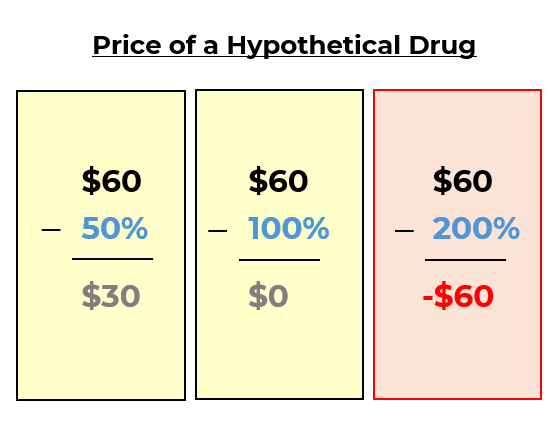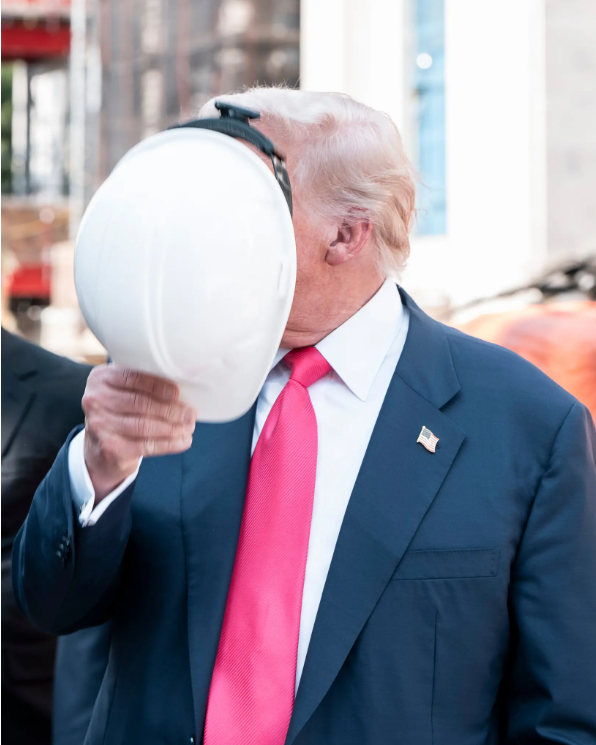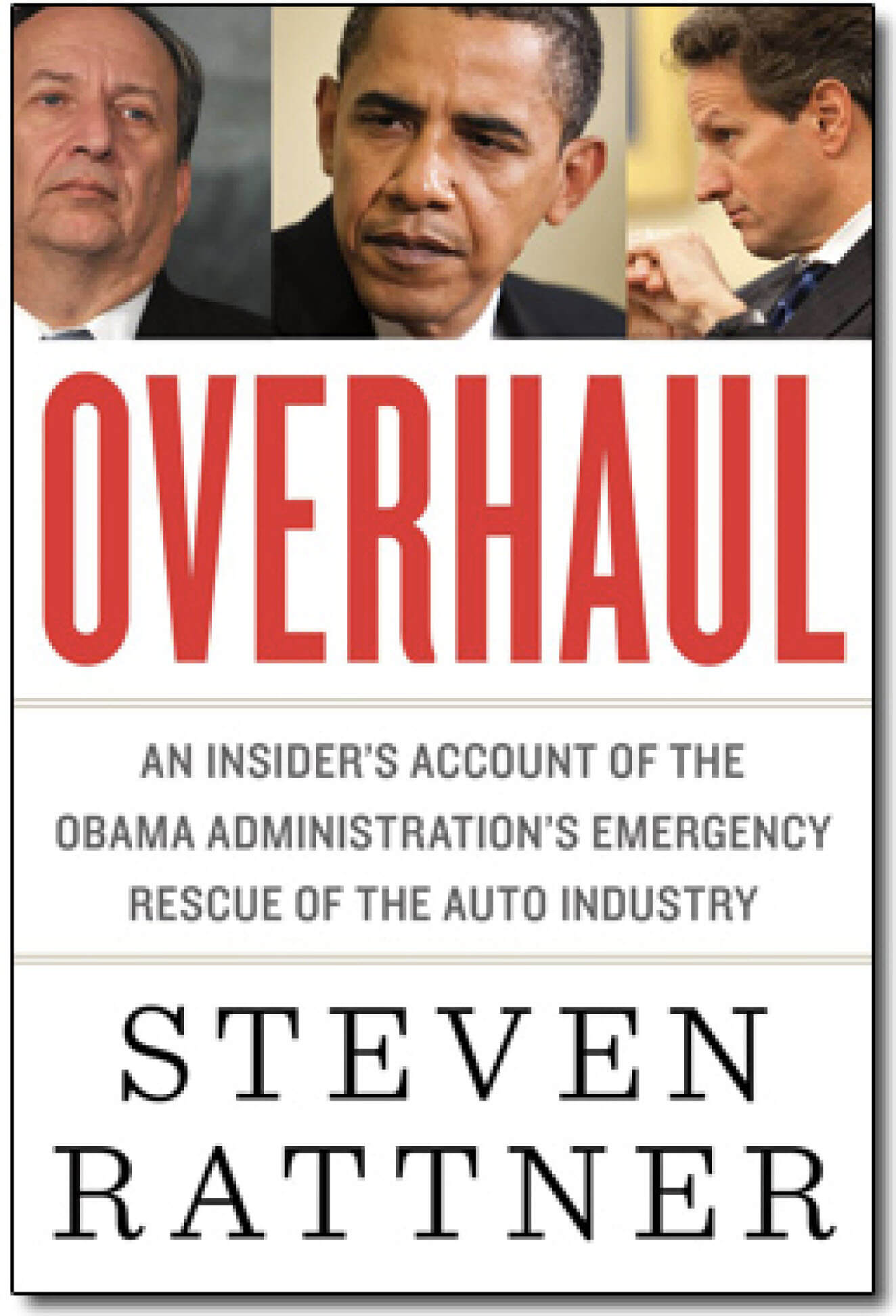The American economy seems to be entering what is sometimes called a “K-shaped” period, by which they mean a period in which the economy is working well for some Americans (usually those near the top) but not nearly so well for others, particularly those further down the ladder. In this cycle, the explosion of artificial intelligence is clearly playing a role.
From an overall perspective, economic growth has slowed sharply, to an annual rate of 1.6% in the first half of 2025 from 2.8% in all of 2024. But artificial intelligence — and particularly the associated capital expenditures — has shifted the nature of the growth. In the first half of 2025, spending on AI jumped to a 31% share of the economy’s growth, up from around 10% in the previous two years. Without that increase, GDP would have grown at just a 1.1% rate in the first half of this year.
Perhaps related to that, wage growth for those in the bottom quartile, which had outpaced increases for those better off since 2015, has now slipped. In August, wages for the bottom quartile were growing at a 3.6% rate while wages for those in the top quartile were increasing at a 4.6% rate. When an economy slows or turns down, the most vulnerable workers tend to experience softness first.
As most Americans would guess, those at the top have been doing exceptionally well for a number of years. Since 2019, personal spending by those in the top 20% has increased by 49%, well above the 24% increase in prices. All other income groups grew their spending at the inflation rate, meaning that they had no material increase in their consumption. At present, the top 10% of households account for 49% of all consumer spending.
Part of what has fueled this explosion of consumption by the wealthy has been the soaring stock market, itself partly due to the excitement around AI. The S&P index has grown by 16% or more in 5 of the past 6 years and is on track to do so again in 2025.
Meanwhile, job growth has slowed dramatically, which may partly reflect the effect of AI as well as uncertainty around tariffs and future economic expansion. Because of the government shutdown, the Bureau of Labor Statistics was unable to issue its September jobs report but ADP believes that the number of private sector jobs fell in September.
Interestingly, ADP has also reported that more than 100% of the net hiring over the past four months has come from large corporations employing 500 or more while smaller firms have been reducing their payrolls. As for the BLS, it had reported that in the four months through August, more than 100% of hiring was in the leisure, hospitality, education and health sectors while employment in all other sectors declined (as did government employment).
This has contributed to a significant uptick in the number of Americans who have been unemployed for 27 weeks or more. Just over a quarter of all Americans now qualify as long term unemployed, the highest since 2016 (other than during the Covid period).
